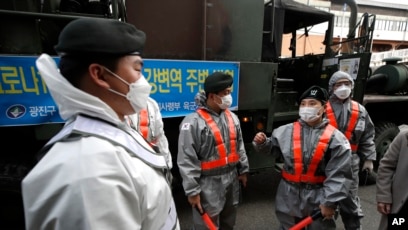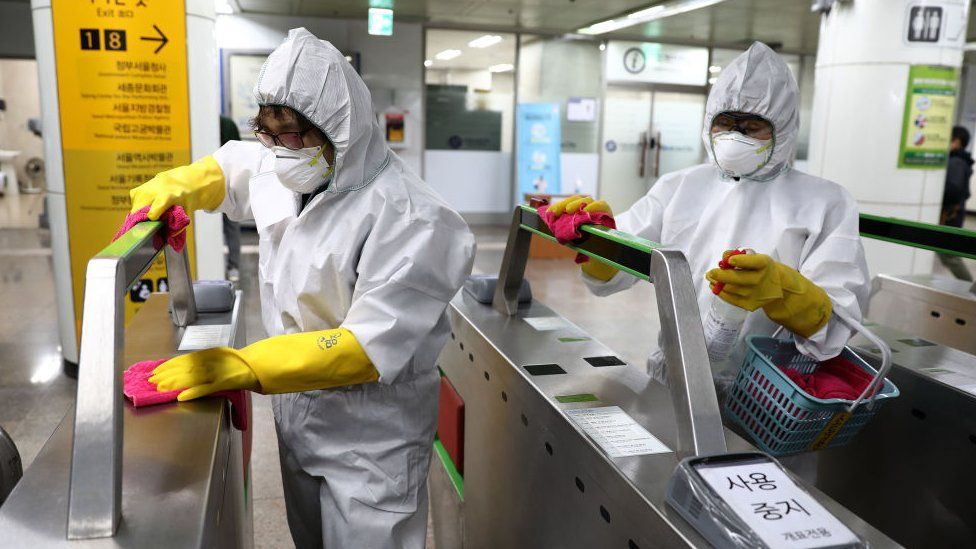
Health officials can test tens of thousands of people per day, which can then lead to more effective and widespread quarantining of infected people and their contacts.South Korea’s government is expected to loosen COVID-19 restrictions after the country hit the 70 percent vaccination threshold, The New York Times reported. As of Monday, the country had tested 274,504 people for the virus. Rather, South Korea implemented rapid large-scale coronavirus testing. Please note this testing center is located before passenger check-in and requires an appointment, so it is not available to passengers in transit.South Korean soldiers on a street in front of Daegu's city hall on March 2.SEOUL: South Korea unveiled on Monday (Oct 25) a three-phase strategy to get back to normal from the coronavirus with all limits on gatherings and distancing gone by February, after it achieved a. Also see Incheon Airport’s website for information on COVID-19 testing options at the airport. Please refer to the list and contact the testing facility that is most convenient for you.
If you must travel and have concerns, talk to your doctor.South Korea also implemented a well-organized contact-tracing program: After tests reveal a positive case, officials use interviews, GPS phone tracking, credit-card records, and video surveillance to trace that person's travel history, according to The Washington Post.The government publishes anonymized data about where each patient went before they were diagnosed on a public website so others can check to see if they've been in contact with a patient and get subsequently tested."Diagnostic capacity at scale is key to epidemic control," Raina MacIntyre, who studies emerging infectious diseases at the University of New South Wales, told Science. Unvaccinated travelers who are at increased risk for severe illness from COVID-19 should avoid nonessential travel to South Korea. Make sure you are fully vaccinated before traveling to South Korea. © (South Korea Defense Ministry/Yonhap via AP)Sailors exit a South Korean Air Force transport aircraft upon their arrival at Seoul Air Base in Seongnam, South Korea, Tuesday, July 20, 2021.South Korea is evacuating the entire crew of one of its navy destroyers after nearly all sailors aboard tested positive for the coronavirus.The country is airlifting the 301 sailors from the Munmu the Great off the coast of East Africa after 247 of them contracted COVID-19 in one of the military's worst outbreaks of the pandemic.Prime Minister Kim Boo-kyum told a meeting of health officials that he was "very sorry for failing to carefully take care of the health of our soldiers," The New York Times reported.Two military planes were dispatched on Tuesday to transport the sailors back to South Korea, where they will be taken to hospitals or quarantine facilities.Defense Minister Suh Wook also apologized for the outbreak, saying he would look into ways to improve COVID-19 prevention measures for service members overseas, according to the Times.The destroyer departed for the Gulf of Aden in February shortly before South Korea began its vaccination campaign. Officials say logistics made it difficult to supply the crew with vaccines, but have faced backlash over not doing more to protect the sailors and not trying hard enough to vaccinate them.Military officials have not revealed what caused the outbreak.A fully vaccinated crew will replace the evacuated sailors and return the ship to South Korea, which is also dealing with cluster outbreaks.At a cabinet meeting Tuesday, President Moon Jae-in said that while the military acted swiftly to bring the crew home, "it wasn't enough in the eyes of the Korean people, and criticism for taking the situation lightly would be unavoidable.
The steep rise in cases began to plateau. After the country reported its first case on 20 January, numbers initially remained low before climbing sharply, reaching a peak of 909 daily infections on 29 February.Then something extraordinary happened. If any uttered words of frustration from behind their masks, they were out of earshot of their fellow voters, kept at a distance by duct tape marking appropriate intervals.As they waited to wash their hands and pull on disposable plastic gloves before entering the booths, some may have allowed themselves to contemplate life beyond exercising their democratic right: an imminent return to work, a round of golf or, at last, a chance to shop for something more indulgent than food and hand sanitiser.Going out for dinner, let alone voting in a national election, would have seemed almost inconceivable weeks earlier when the coronavirus threatened to exact the same relentless toll on South Koreans as it has in the US and parts of Europe.Long before politicians in Britain accepted that the illness posed a serious threat to public health, South Korea watched the rise in reported daily infections with growing alarm. L ate last week millions of South Koreans queued patiently at polling stations to cast their votes for a new national assembly.


South Korea Coronavirus How To Contain The
This week restrictions on shops, restaurants, bars, gyms, cram schools and religious services – the latter the source of the country’s biggest single outbreak – were relaxed. The president, Moon Jae-in, has embarked on a campaign of “coronavirus diplomacy” with other world leaders, and the country has exported test kits to at least 20 nations including the US.The government’s newly released playbook on how to contain the coronavirus, Flattening the curve on Covid-19: the Korean experience, says: “South Korea successfully flattened the curve on Covid-19 in 20 days without enforcing extreme draconian measures that restrict freedom and movement of people.”While health officials remain cautious for fear of a second wave of infections, life is slowly returning to a version of normality. In 2015 the Middle East respiratory syndrome killed 36 people, infected 186 and forced thousands into quarantine in an outbreak traced to a single visitor from overseas.Its approach has inevitably attracted international attention.
But the weather was lovely. “We were wearing masks while we played, and we were still worried about the coronavirus. There was evidence of that in Seoul this week where people were returning to work and flocking to shopping malls and restaurants.For Kim Tae-hyung, a 31-year-old engineer from Seoul, the cautious embrace of a post-pandemic world meant once again playing the game he loves.“I’m a member of a community football club and we went out to play on Saturday for the first time in two months,” he said. “I know that other countries are looking to South Korea as the numbers have gone down here, but I think it is because of the hard work of health officials, not the politicians.”Whichever group deserves credit, South Koreans are eyeing a time in which Covid-19 is no longer the sole determinant of the way they live. But as in so many other countries, the highest praise is reserved for exhausted health workers.“I think the government has done a reasonably good job,” said Lee Mi-young, 35, who spent time in hospital after contracting the virus from her husband. Composite: Getty ImagesThe ruling party’s comfortable victory in last week’s national assembly elections has been interpreted as popular approval of the government’s handling of the crisis.


 0 kommentar(er)
0 kommentar(er)
